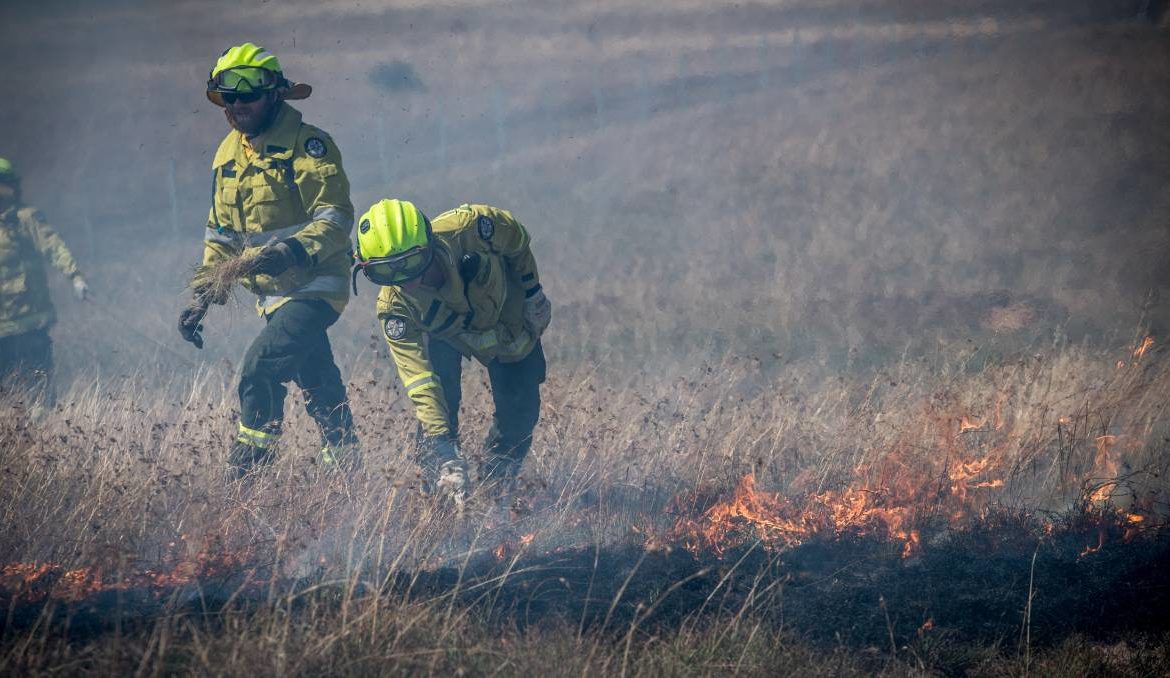news, latest-news,
The ACT failed to meet its target for hazard reduction burns by almost 50 per cent in the past financial year, as the summer fires and coronavirus pandemic combined to present Parks and Conservation its “most-challenging ever” conditions. Parks completed just 54 per cent of planned prescribed burns in 2019-20, down from 75 per cent the previous financial year, according to the environment and planning directorate’s latest annual report. The report detailed the series of factors which hindered Parks’ efforts, starting with the dry conditions which made burns unsuitable last Spring. Much-needed rain to lift moisture levels did not arrive until after the early declaration of the 2019-20 bushfire season, which eventually proved to be the “busiest” since 2003. The season was marked by two fire emergencies; the Beard fire near Canberra Airport and the massive Orroral Valley blaze, which burnt through 80 per cent of Namadgi National Park after igniting on January 27. “Summer was hot and long with an exceptional number of days with a fire danger rating above Very High – no burning possible,” the report said. “After the busiest season PCS has experienced in 17 years, we then faced COVID-19”. Coronavirus restrictions prevented the large gatherings of staff needed to complete a controlled burn, the report said. The summer fires and the pandemic were also blamed for Parks’ failure to meet its targets for other forms of hazard reduction, including the physical removal of fuels (21 per cent down) and maintenance of trails (31 per cent down). It did meet it goal for the fuel management technique of grazing. Restrictions which meant only one staff member could travel in a vehicle at one time during the pandemic effectively slashed Parks’ fuel removal workforce in half for almost four months, the report said. Debate about the role of hazard reduction burning raged throughout Australia’s Black Summer, with Prime Minister Scott Morrison even suggesting it was as, if not more, important than cutting carbon emissions in reducing bushfire threats. Fire chiefs, including then NSW Rural Fire Service Commissioner Shane Fitzsimmons, repeatedly stressed prescribed burns were not a silver bullet to eliminating bushfire risk and the tactic had little effect in preventing the spread of large-scale blazes. ACT Emergency Services Minister Mick Gentleman earlier this year said that “no amount” of burning would have stopped the Orroral Valley fire. The royal commission into the Black Summer fires supported that position, explicitly refuting claims put to it in public submissions that prescribed burning was “in effect, a panacea – a solution to bushfire risk”. The commission’s final report said the weight of research suggested that as conditions deteriorated in large-scale blazes, fuel reduction had “diminishing effectiveness” and might have “no appreciable effect under extreme conditions”. However, it said there remained “significant gaps in the science” about the role of fuel loads in extreme fires and more research was required. An ACT government spokesman said it was working closely with other states and territories to act on the royal commission’s high priority recommendations. It was also responding to the findings of internal and external reviews of Canberra’s summer fire season, the spokesman said.
/images/transform/v1/crop/frm/fdcx/doc74o5yfy90utzz2hdj9p.jpg/r0_283_5568_3429_w1200_h678_fmax.jpg
The ACT failed to meet its target for hazard reduction burns by almost 50 per cent in the past financial year, as the summer fires and coronavirus pandemic combined to present Parks and Conservation its “most-challenging ever” conditions.
The report detailed the series of factors which hindered Parks’ efforts, starting with the dry conditions which made burns unsuitable last Spring.
Much-needed rain to lift moisture levels did not arrive until after the early declaration of the 2019-20 bushfire season, which eventually proved to be the “busiest” since 2003.
The season was marked by two fire emergencies; the Beard fire near Canberra Airport and the massive Orroral Valley blaze, which burnt through 80 per cent of Namadgi National Park after igniting on January 27.
“Summer was hot and long with an exceptional number of days with a fire danger rating above Very High – no burning possible,” the report said.
“After the busiest season PCS has experienced in 17 years, we then faced COVID-19”.
Coronavirus restrictions prevented the large gatherings of staff needed to complete a controlled burn, the report said.
The summer fires and the pandemic were also blamed for Parks’ failure to meet its targets for other forms of hazard reduction, including the physical removal of fuels (21 per cent down) and maintenance of trails (31 per cent down). It did meet it goal for the fuel management technique of grazing.
Restrictions which meant only one staff member could travel in a vehicle at one time during the pandemic effectively slashed Parks’ fuel removal workforce in half for almost four months, the report said.
Emergency Services Minister Mick Gentleman Picture: Elesa Kurtz
Fire chiefs, including then NSW Rural Fire Service Commissioner Shane Fitzsimmons, repeatedly stressed prescribed burns were not a silver bullet to eliminating bushfire risk and the tactic had little effect in preventing the spread of large-scale blazes.
The commission’s final report said the weight of research suggested that as conditions deteriorated in large-scale blazes, fuel reduction had “diminishing effectiveness” and might have “no appreciable effect under extreme conditions”.
However, it said there remained “significant gaps in the science” about the role of fuel loads in extreme fires and more research was required.
An ACT government spokesman said it was working closely with other states and territories to act on the royal commission’s high priority recommendations. It was also responding to the findings of internal and external reviews of Canberra’s summer fire season, the spokesman said.







